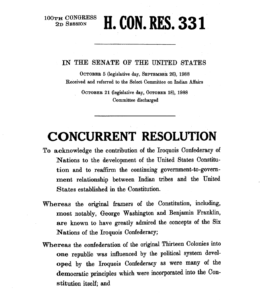“Ho Nee Yeath Taw No Row, King of the Generethgarich” by John Simon. Mezzotint.
National Portrait Gallery, Smithsonian Institution
“In 1710, Mohawk leader Ho Nee Yeath Taw No Row journeyed to England as one of four representatives of the Five Nation Haudenosaunee (Iroquois) Confederacy. Appearing before Queen Anne, the group successfully lobbied for English military assistance in combating French incursions into the Great Lakes region. To commemorate this historic diplomatic visit, the queen commissioned a painting of each man and sent dozens of engraved copies back across the Atlantic. Distributed among Indigenous and colonial communities, the portraits were reminders of the mutually beneficial alliance between the so-called Indian Kings and the English queen.Here, Ho Nee Yeath Taw No Row is portrayed holding a bow in one hand with a full quiver of arrows resting at his feet, suggesting he is an able warrior who comes in peace. The wolf pictured beside him is a symbol of his matrilineal family clan.”
The U.S. Constitution and our system of government drew on the first hand knowledge of George Washington, Benjamin Franklin and others who witnessed the strength of the Haudenosaunee, also known as the Iroquois Confederation of Nations. Its governing body united 5 to 6 Iroquois nations for hundreds of years. Many of its democratic principles are said to be embraced by the framers of our constitution and were acknowledged by the U.S. Senate in 1988.

